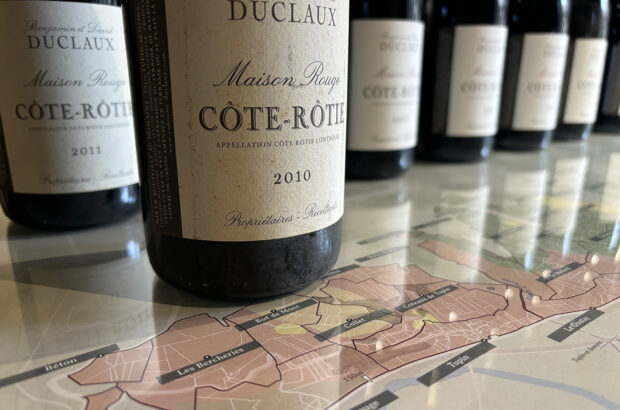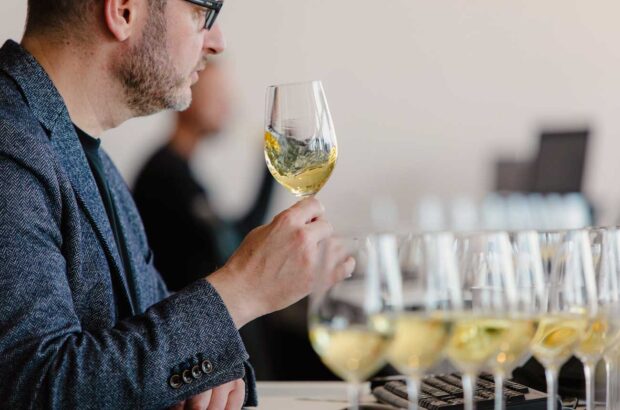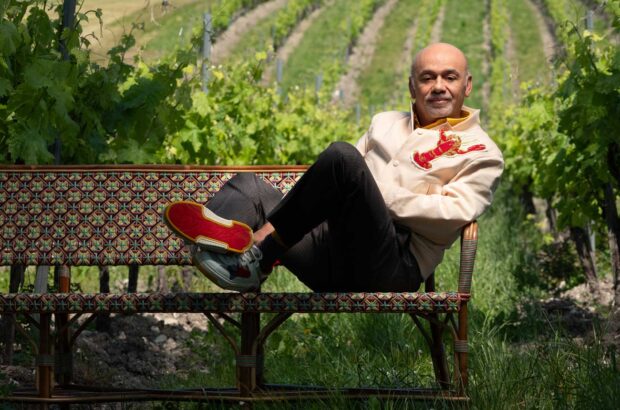Bordeaux’s reds beyond the 1855 classification can offer fantastic value. But ranking them has caused controversy and discontent. A frustrated Clive Coates MW tracks the chequered history of the region’s crus bourgeois
See Coates’ top cru bourgeois performers here
Here’s a pair of interesting statistics. In 1997, Farr Vintners sold Château Les Ormes de Pez 1996 for £155 a case en primeur and Château Lafite for £950. Fourteen years later, the prices for the 2010 vintage were £240 and £12,500 respectively. So Les Ormes de Pez had hardly kept up with inflation, while Lafite had increased more than 13 times.
 I have long argued, as would most of the wine trade, that while the top end of Bordeaux – perhaps 40 wines – have priced themselves at ridiculous levels, the remainder have never been better value. Add to this the fact that at the Ormes de Pez level the wines have never been better, and you begin to suspect that buying Bordeaux is a no-brainer.
I have long argued, as would most of the wine trade, that while the top end of Bordeaux – perhaps 40 wines – have priced themselves at ridiculous levels, the remainder have never been better value. Add to this the fact that at the Ormes de Pez level the wines have never been better, and you begin to suspect that buying Bordeaux is a no-brainer.
It is at the cru bourgeois level that we need to direct our attention. Forget the pretensions of the first growths and super-seconds. Moreover you can also drink the lesser growths sooner. The last vintage of Léoville-LasCases I bought was the 1990. I’ve only just stopped purchases of wines at the Ormes de Pez level (my approaching old age comes into it).
The wines that I am addressing are what are known, and variously classified, as crus bourgeois. When the authorities are being sensible, these are divided into crus bourgeois, crus bourgeois supérieurs and crus bourgeois exceptionnels.
Anyone who has followed, or tried to get to grips with, the various classifications of the Médoc crus bourgeois over the years (less headline-making than those of St-Emilion, but no less important for all that) will have seen that all too frequently much time and effort on the part of the Association of Crus Bourgeois – and the brokers and other experts they have persuaded to help them pronounce on what category a property is entitled to – have come to nothing. No sooner has a list been revised than the lawyers creep in, pointing out vested interests here, unfairness there, and deep-set flaws in general. So, all too often, the new classification is kicked into limbo, the old one is declared out of date, and all those proprietors who hoped that their dedication would be rewarded by an upgrade have their hopes dashed.
This is where we are at the moment. You will have heard of crus bourgeois exceptionnels. Forget the concept; it doesn’t exist any more. Moreover, the vast majority of the estates that would be considered an exceptionnel have departed from the field; they are no longer members of the Association of Crus Bourgeois at all, so could not be considered even if the idea were to be resurrected. At the moment there is but one category, that of simple,rock-bottom cru bourgeois. It is all absurd.
Revising history
There have always been crus bourgeois wines, back since wines were first unofficially classified in brokers’ notebooks around the time of the French Revolution.  In the 1930s, a classification of the bourgeois growths made it all ‘official’ (see box), and was an attempt to stir up some enthusiasm for the wines at a time of economic privation. This list named six exceptionnels, 97 supérieurs and 387 simple bourgeois. The inference was that, come a revision of the list of crus of 1855, the exceptionnels would be prime candidates for upgrading.
In the 1930s, a classification of the bourgeois growths made it all ‘official’ (see box), and was an attempt to stir up some enthusiasm for the wines at a time of economic privation. This list named six exceptionnels, 97 supérieurs and 387 simple bourgeois. The inference was that, come a revision of the list of crus of 1855, the exceptionnels would be prime candidates for upgrading.
Fast forward 30 years. By this time rumours had begun to circulate in Bordeaux. The 1855 classification was now 100 years old. People such as progressive-minded author and wine shipper Alexis Lichine had started to lobby for a revision. He published his own version. (So did I, a few years later). Eventually Baron Philippe de Rothschild managed to have Mouton Rothschild promoted to first growth. But if this was a crack in the ceiling, the roof has held very firmly since.
Nevertheless, a number of bourgeois proprietors began to worry that, rather than exceptionnel status working as a hint to judges that cru classé should be considered, it might have the opposite effect. One such was Henri Martin, founder of Château Gloria. He had assembled Gloria very largely from parcels of St-Julien classed growths in the profitless times of the 1930s and 1940s. St-Julien being what it is, those vines not from classified growths were just as promising from the quality point of view. Everyone considered that Gloria was of third-growth quality. Martin refused to join the crus bourgeois association. And he would not be the only one.
Martin’s son-in-law, Jean-Louis Triaud, holds to the view that accepting bourgeois status – even exceptionnel – would confine Château Gloria to a sort of second division.
Despite this, a revision of 1932, published in 1966 and revised again in 1978, decreed 18 exceptionnels, 41 crus bourgeois supérieurs, including nine from the Bas-Médoc – this area having been considered infra dig (not worthy of consideration) in 1932 – and 58 crus bourgeois, both restricting the bourgeois accolade and extending the best end of it. However, Martin had been joined by others who deigned not to take part, among them Châteaux d’Angludet, Bel-Air Marquis d’Aligre, La Couronne, Moulin-Riche (by that time Léoville-Poyferré’s second wine) and Siran.
There was a further revision in 2003 (see box) and this was when the trouble started. The Association of Crus Bourgeois announced 247 properties in three tiers: nine exceptionnels, 87 supérieurs and 151 bourgeois. But this was before the lawyers began to line up outside the doors.
As had happened in the past, the major decisions had been left to a team of experienced people, a number of them leading brokers of the day, others oenologists or merchants; but including the president of the Union of Crus Bourgeois of the Médoc. It was argued that he and others had vested interests, and in 2007, annulling the new classification, the Court of Appeal threw it out on the basis that ‘one cannot judge something in which one has an interest’. Subsequently the Fraud Office even went as far as banning the use of the term cru bourgeois altogether.
Further ‘absurdity’
Thankfully this last piece of nonsense was revoked in 2009. Since then, those properties that wish to be considered bourgeois can apply for recognition. But this is the sole category. As you will see in the accompanying list (see box left) most of the best – indeed practically all the best – have expressed no interest whatsoever.
I wrote to those properties which, for one reason or another, are not currently members of the association. Why not? I wanted to know.
Several, including Jean Gautreau of Château Sociando-Mallet and Jean-Pierre Foubet of Château Chasse-Spleen, pointed out that currently every property has to submit each wine for approval each year. There is no longer necessarily any continuity. It is not therefore a classification.
Moreover, the judgement does not appear until after the en primeur season has passed. Pierre Graffeuille, sales director of Léoville-Las Cases and the other Delon estates, including Potensac, finds it absurd that, as well as the quality of the wine, the authorities wish to pronounce on the neatness of the park and the château, and the quality of the reception for visitors.
Henri Duboscq of Château Haut-Marbuzet says that it is insulting that the most his property can aspire to would be an alliance with wines that sell for half or less than his. By contrast, most of these, like Edouard Miailhe of Château Siran, would welcome a return to the 2003 arrangement, which they see as a useful guide for the consumer.
Finally, I’d like to point out an error of logic. If in 2003, the experienced team of decision-makers were guilty of letting vested interests creep in, then surely those vested interests still apply today, even if they are only pronouncing on a single, lower level. It is a vexed question.
Those who are the most qualified to judge must inevitably be the same people who are closest to the ground, on the spot. That is, professionals withinterests, vested or not. Carry this to its conclusion and you could never have any vinous classifications at all. Château Lafite may not need a classification. But one could be very useful to Château Nouveauet-et-Inconnu.
Clive Coates MW is one of the world’s leading wine writers and authors; www.clive-coates.com
Written by Clive Coates MW







